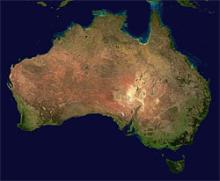UTOPIA Pursues Additional Funding
UTOPIA, the open access FTTH network in several cities of Utah, has been seeking some $20 million to continue adding new subscribers to the network. The cities involved seem to be on board, committing to the funding following recent successes.
Mayor Mike Winder, of West Valley City - one of the UTOPIA cities, makes the case for digging deeper to lend money to the network:
UTOPIA's good news is that since June 2008, it's added over 3,500 new customers and reached about 10,000 subscribers, the number of service providers on the network has grown from three to 12, and national voices — from Google to the New York Times — are trumpeting the virtues of an open-fiber network.The plain and simple fact is that these towns have already committed to the project; they are vested in its success. Now under better management, perhaps his whole town will have access to fastest speeds available in the country:
Only 23 percent of my city has UTOPIA fiber, and there are homes and businesses that want access to the speed of light. After weighing the issue for months, I've concluded that we need to bring UTOPIA fiber to the rest of West Valley City, and just as importantly, to grow UTOPIA to profitability. I will be encouraging my council and my colleagues in UTOPIA cities around the state to join me in charging forward.A press release from UTOPIA announces ambitious plans:
The new plan anticipates adding about 20,000 more customers over the next several years. “We’ve known for a long time that UTOPIA needs a much larger customer base, and a good mix of business and residential customers, to make the books balance,” says Murray Mayor Dan Snarr. “Our cities are already obligated to the network for years to come, so we need to grow to critical mass rapidly, based on a plan to ensure long-term financial health.”And Orem's mayor reiterated UTOPIA's philosophy (noting that the NY Times have called for open access networks):
Governments build roads, and allow FedEx and UPS to compete on them.




